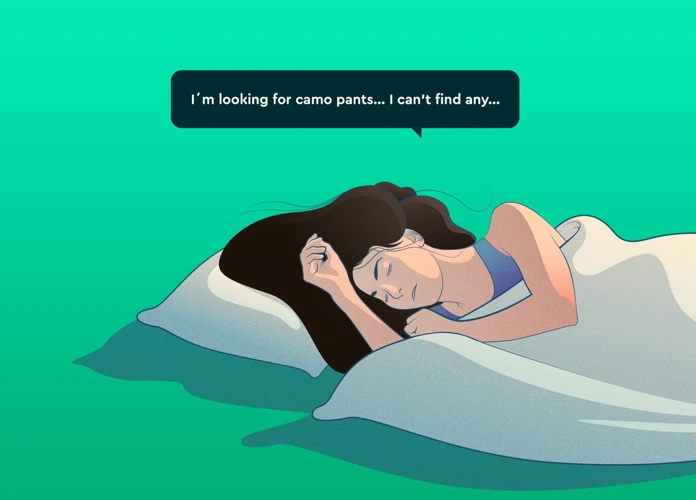Sleep talking is a mysterious phenomenon that has fascinated and perplexed people for centuries. Many of us have witnessed a loved one mumbling gibberish or engaging in eloquent conversations in their sleep. But could these nocturnal utterances be a sign of an underlying sleep disorder? In this article, we will delve into the world of sleep talking and explore its definition, frequency, common types, and causes. We will also examine when sleep talking becomes a cause for concern and its potential link to sleep disorders. We will discuss the diagnostic methods used to identify sleep disorders and the available treatments. If you’ve ever wondered about the secrets hidden in your nighttime words, read on to unravel the enigma of sleep talking.
What is Sleep Talking?
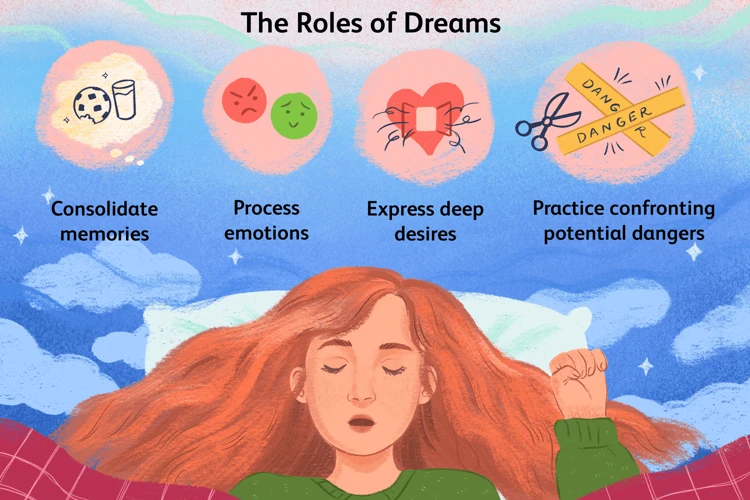
Sleep talking, also known as somniloquy, is a fascinating phenomenon that occurs during sleep. It involves speaking out loud while in a state of slumber. Sleep talking can range from simple and incomprehensible mumbling to coherent and meaningful conversations. While the content of sleep talking can vary widely, it is often related to the dreams and experiences occurring during REM sleep. Some individuals may even speak in different languages during their sleep. The frequency of sleep talking varies from person to person, with some individuals rarely experiencing it, while others may have episodes of sleep talking on a regular basis. To learn more about sleep talking and its connection to dreams, click here.
Definition of Sleep Talking
Sleep talking, also known as somniloquy, refers to the act of speaking out loud while asleep. It is a parasomnia, which is a category of sleep disorders characterized by abnormal behaviors during sleep. During sleep talking episodes, individuals may utter sounds, words, or complete sentences. The content of the speech can vary widely, ranging from gibberish and nonsensical utterances to coherent and meaningful conversations. Sleep talking most commonly occurs during the REM (rapid eye movement) phase of sleep, which is the stage associated with vivid dreams. It can happen in any sleep stage, though, including light sleep and deep sleep. Although the individual may not have any recollection of the sleep talking episode upon waking up, it can be a source of amusement or concern for bed partners or family members. For more information about the different types of sleep talking, you can refer to our article on types of sleep talking. Additionally, sleep talking can sometimes have psychological meanings, and you can explore this aspect further in our article on the psychological meaning of sleep talking.
Frequency of Sleep Talking
The frequency of sleep talking varies greatly among individuals. Some people may rarely experience sleep talking, while others may have episodes on a regular basis. It is estimated that approximately 5% of adults engage in sleep talking at some point in their lives. Children, especially those between the ages of 3 and 10, are more likely to talk in their sleep, with around 50% of them experiencing sleep talking at some point. Sleep talking can occur at any stage of sleep, but it is more common during the deeper stages of sleep, such as REM sleep. The duration of sleep talking episodes can also vary, with some individuals uttering a few words or phrases, while others engage in longer and more coherent conversations. It is important to note that the frequency of sleep talking can be influenced by various factors, such as stress, sleep deprivation, alcohol consumption, and certain medications. Understanding the frequency of sleep talking can help individuals assess whether their sleep talking patterns are within the normal range or if further evaluation is warranted.
Common Types of Sleep Talking
When it comes to sleep talking, there are several common types that individuals may experience. Sleep talking can manifest in various forms, each with its own unique characteristics. Here are some of the most prevalent types of sleep talking:
1. Gibberish: This type involves incoherent and nonsensical speech during sleep. Words and phrases may be jumbled and lack any understandable meaning.
2. Conversations: Some individuals engage in fully-formed conversations while asleep. They may respond to imagined dialogues or interact with unseen individuals in their dreams.
3. Recalling Memories: Sleep talking can also involve the recollection of past events or memories. Sleep talkers may share stories or experiences from their waking life, sometimes even recounting events from their childhood.
4. Emotional Expressions: Sleep talking can serve as an outlet for emotional expression during sleep. This can include laughter, crying, or expressing anger or fear.
5. Profanity: In some cases, sleep talking may involve the use of explicit or offensive language that is not typically part of the individual’s waking vocabulary.
6. Singing or Humming: Sleep talkers may also engage in singing or humming melodies while asleep. This is known as somniloquy with musical content.
It is important to note that individuals may experience a combination of these types or exhibit different types at different times. Sleep talking can provide a fascinating glimpse into the subconscious mind and the inner workings of dreams. To explore more about the psychological meanings behind sleep talking, click here.
Causes of Sleep Talking
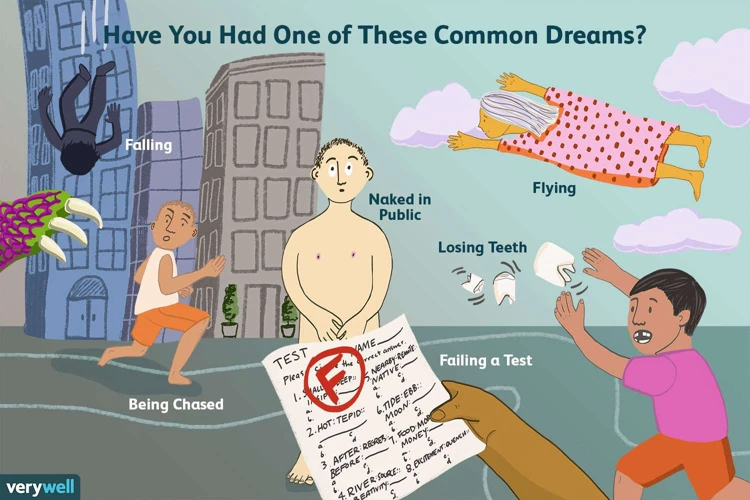
The causes of sleep talking can be attributed to a variety of factors. Sleep talking is often related to dreams and the rapid eye movement (REM) stage of sleep. During this stage, the brain is highly active, and individuals may vocalize their dream experiences. Stress and anxiety can also contribute to sleep talking, as heightened emotions can manifest in verbal expressions even during sleep. Additionally, certain substances like alcohol and medications can disrupt the normal sleep cycle and increase the likelihood of sleep talking. To explore the common types of sleep talking and how they originate, click here.
Related to Dreams and REM Sleep
Sleep talking is closely associated with dreams and the stage of sleep known as REM (rapid eye movement) sleep. During REM sleep, our brain activity increases, and vivid dreams occur. REM sleep is characterized by rapid eye movements, increased heart rate, irregular breathing, and muscle paralysis. It is during this stage that most sleep talking episodes occur. As our brains are actively processing dreams and memories during REM sleep, it is believed that sleep talking is a result of the brain attempting to communicate and express those dreams or thoughts verbally. It is important to note that not all sleep talking is related to dreams, as some episodes may be nonsensical utterances or repetitive phrases. However, the connection between sleep talking and REM sleep highlights the strong influence that our dreams have on our sleep behaviors.
Stress and Anxiety
Stress and anxiety are common factors that can contribute to episodes of sleep talking. When individuals experience high levels of stress or anxiety, their sleep patterns can be disrupted, leading to increased likelihood of sleep talking. Stressful events, such as work pressures, relationship issues, or financial difficulties, can trigger emotional arousal during sleep, leading to the manifestation of sleep talking. Anxiety disorders, such as generalized anxiety disorder or panic disorder, can also play a role in sleep talking. The racing thoughts and heightened emotional state associated with anxiety can carry over into sleep, causing individuals to talk while unconscious. Additionally, individuals with post-traumatic stress disorder (PTSD) may exhibit sleep talking as a result of trauma-related nightmares and intrusive thoughts. It is important to address and manage stress and anxiety through various relaxation techniques, therapy, and lifestyle modifications to help minimize the occurrence of sleep talking episodes.
Alcohol and Medications
Alcohol and medications can also play a role in sleep talking. The consumption of alcohol before bedtime can disrupt the normal sleep cycle and increase the likelihood of sleep talking episodes. Alcohol acts as a depressant on the central nervous system, leading to relaxation and sedation. However, it can also disrupt the quality and duration of sleep, causing fragmented and restless sleep. This can contribute to an increased occurrence of sleep talking. Additionally, certain medications, such as sedatives and antidepressants, may have side effects that include sleep disturbances and sleep talking. These medications can alter the balance of neurotransmitters in the brain, affecting sleep patterns and potentially leading to sleep talking episodes. It is important to note that alcohol and medications can worsen any underlying sleep disorders, exacerbating sleep talking and other related symptoms. It is advisable to avoid excessive alcohol consumption and to consult with a healthcare professional regarding medications that may be causing or contributing to sleep talking episodes.
When Does Sleep Talking Become a Concern?

While sleep talking is generally considered harmless, there are instances when it may become a cause for concern. The duration and intensity of sleep talking episodes can play a role in determining whether it is a problem. If sleep talking occurs frequently and lasts for an extended period of time, it may indicate an underlying sleep disorder. Additionally, if sleep talking disrupts your own sleep or the sleep of your partner or family members, it could be a cause for concern. This disruption can lead to excessive daytime sleepiness and fatigue. It’s also important to pay attention to any associated symptoms that accompany sleep talking, such as sleepwalking or other abnormal behaviors during sleep. If you are concerned about your sleep talking or its impact on your sleep quality, it is recommended to consult with a healthcare professional for proper evaluation and guidance.
Duration and Intensity
Duration and intensity are important factors to consider when determining if sleep talking is a cause for concern. The duration of sleep talking episodes can vary greatly. Some individuals may only have brief, sporadic episodes lasting a few seconds, while others may engage in longer episodes that can last several minutes. It is worth noting that a single episode of sleep talking does not necessarily indicate a sleep disorder. However, if sleep talking occurs frequently and consistently over a prolonged period, it may be worth investigating further.
The intensity of sleep talking refers to the volume and clarity of the spoken words. Some individuals may speak softly or in a whisper, while others may speak loudly or even shout during their sleep. The intensity of sleep talking can also fluctuate within an episode, ranging from barely audible murmurs to clear and distinct speech.
Tracking the duration and intensity of sleep talking episodes can provide valuable insights for healthcare professionals in diagnosing potential sleep disorders. If you or a loved one experiences prolonged and intense sleep talking episodes that disrupt sleep quality, it may be advisable to seek medical evaluation.
Duration and Intensity of Sleep Talking:
– Duration: Can range from a few seconds to several minutes.
– Intensity: Varies from soft whispers to loud or shouted speech.
Remember, a diagnosis should be made by a qualified healthcare professional based on a comprehensive evaluation of the individual’s sleep patterns and symptoms.
Disruptions in Sleep
Disruptions in sleep can be one of the key factors indicating when sleep talking becomes a concern. When sleep talking occurs frequently and is loud or intense, it can disrupt the sleep of both the person talking and their sleep partner. It can lead to fragmented sleep, resulting in daytime sleepiness and fatigue. Sleep talking may also disrupt the sleep of others in the household, causing frustration and annoyance. Additionally, sleep talking can be a symptom of other sleep disorders such as sleep apnea or restless leg syndrome, which can further disrupt sleep patterns. The constant interruptions in sleep can have a detrimental impact on overall sleep quality, leaving individuals feeling unrested and experiencing difficulties with concentration and focus during the day. It is important to address disruptions in sleep to ensure optimal sleep health and well-being.
Associated Symptoms
When it comes to sleep talking, there are certain associated symptoms that may indicate an underlying sleep disorder. These symptoms can vary from person to person, but it is important to be aware of them. Some common associated symptoms of sleep talking include:
- Sleep interruptions: Sleep talking can disrupt the sleep of both the individual who is talking and their sleep partner. It can lead to fragmented sleep and decreased sleep quality.
- Vocalizations: Sleep talking can involve a range of vocalizations, including mumbling, talking, shouting, or even screaming. The volume and intensity of these vocalizations can vary.
- Physical movements: In some cases, sleep talking may be accompanied by physical movements, such as gesturing or thrashing. These movements can be mild or more pronounced.
- Emotional expressions: Sleep talking can also involve emotional expressions, such as laughing, crying, or expressing fear or anger. These emotions may or may not be related to the content of the dreams or experiences.
- Frequent awakenings: People who frequently experience sleep talking may find themselves waking up more frequently throughout the night. These awakenings can disrupt the natural sleep cycle and lead to daytime sleepiness.
- Daytime fatigue: Due to the disruptions in sleep caused by sleep talking, individuals may experience daytime fatigue and reduced alertness. This can impact their overall well-being and daily functioning.
It is important to note that while these associated symptoms may indicate an underlying sleep disorder, they do not necessarily guarantee the presence of one. If you or a loved one are experiencing these symptoms or are concerned about your sleep quality, it is recommended to consult with a healthcare professional for a proper evaluation and diagnosis.
Link Between Sleep Talking and Sleep Disorders
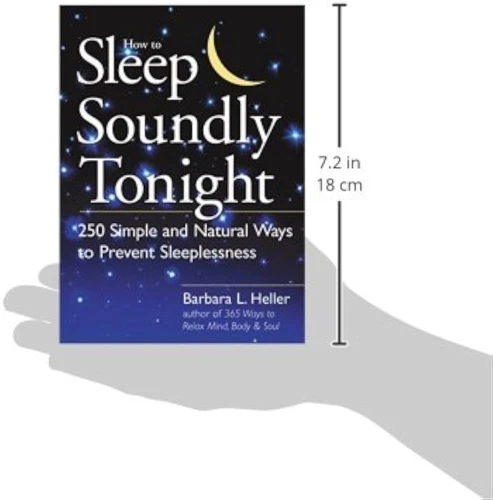
There is a strong link between sleep talking and various sleep disorders. Sleep talking, in some cases, can be an indicator of an underlying sleep disorder and may warrant further investigation. One of the sleep disorders associated with sleep talking is sleep apnea. Sleep apnea is characterized by pauses in breathing during sleep, which can lead to fragmented sleep and excessive daytime sleepiness. Another sleep disorder commonly linked to sleep talking is REM sleep behavior disorder, where individuals act out their dreams physically during REM sleep. Sleep talking can also be observed in individuals with night terrors, a sleep disorder characterized by intense feelings of fear or dread during sleep. It is important to note that not everyone who sleep talks will have a sleep disorder, but understanding the link between sleep talking and these conditions can help in identifying potential issues and seeking appropriate treatment.
Sleep Disorders Associated with Sleep Talking
There are several sleep disorders that have been associated with sleep talking, indicating a potential underlying issue. Let’s explore some of these disorders:
1. Nightmares and Sleep Terrors: Sleep talking can be prevalent among individuals who experience frequent nightmares or sleep terrors. These conditions can cause intense fear and anxiety during sleep, leading to vocalizations such as screams, cries, or panicked conversations.
2. REM Sleep Behavior Disorder (RBD): RBD is a disorder characterized by the absence of muscle paralysis during REM sleep, resulting in individuals physically acting out their dreams. Sleep talking can be a common occurrence in individuals with RBD, as they may engage in vocalizations related to their dream activities.
3. Narcolepsy: Narcolepsy is a neurological disorder that affects the brain’s ability to regulate sleep-wake cycles. Individuals with narcolepsy often experience symptoms such as excessive daytime sleepiness, sudden loss of muscle tone (cataplexy), and vivid hallucinations. Sleep talking can be seen in some individuals with narcolepsy, especially during episodes of hallucinations or sleep paralysis.
4. Sleep-Related Eating Disorder (SRED): SRED is a parasomnia characterized by recurrent episodes of eating during sleep, often accompanied by sleep talking. Individuals with SRED may engage in conversations related to food or eating while in a sleepwalking-like state.
5. Sleep Apnea: Sleep apnea is a sleep disorder where breathing is repeatedly interrupted during sleep. While sleep apnea itself may not directly cause sleep talking, the disruptions in sleep can lead to increased sleep talking episodes.
It’s important to note that sleep talking can also occur in individuals without a diagnosed sleep disorder. However, if sleep talking is accompanied by other concerning symptoms or significantly affects sleep quality, it may be worth consulting a healthcare professional for further evaluation and diagnosis.
Impact on Sleep Quality
One of the significant concerns related to sleep talking is its impact on sleep quality. Sleep talking can cause disruptions in the sleep cycle, leading to fragmented and less restful sleep. When a person engages in vocalizations during sleep, it can disturb their own sleep as well as their bed partner’s sleep. This can result in frequent awakenings, difficulty falling back asleep, and overall poor sleep efficiency. The interruptions in sleep caused by sleep talking can lead to daytime drowsiness, fatigue, and decreased cognitive function. It can also contribute to the development or exacerbation of other sleep disorders such as insomnia or sleep apnea. Managing sleep talking and improving sleep quality may involve addressing the underlying causes, utilizing therapies or medications prescribed by medical professionals, and implementing sleep hygiene practices. Ensuring a quiet and comfortable sleep environment, practicing stress reduction techniques, and maintaining consistent sleep schedules can also help minimize the impact of sleep talking on sleep quality.
Diagnosing Sleep Disorders
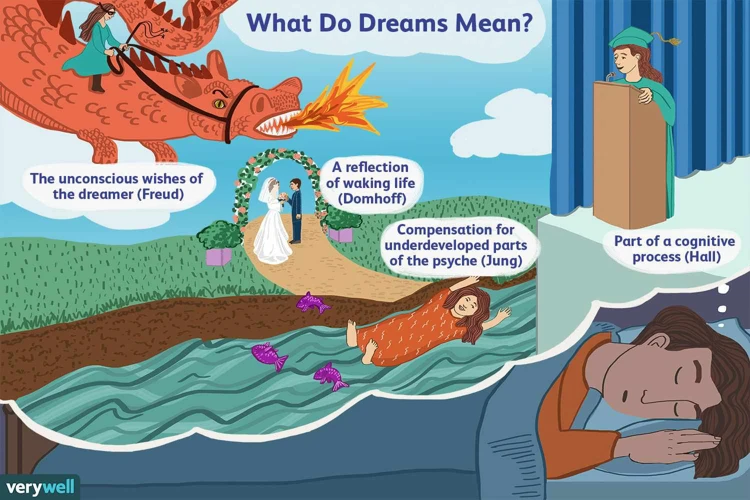
Diagnosing sleep disorders can be a complex process that requires a comprehensive evaluation of an individual’s sleep patterns and behaviors. One of the key methods used in the diagnosis of sleep disorders is a sleep study, also known as polysomnography. This involves monitoring various physiological parameters during sleep, including brain activity, eye movements, heart rate, and breathing patterns. The data collected during a sleep study provides valuable information about a person’s sleep architecture and can help identify any underlying sleep disorders that may be causing sleep talking. In addition to sleep studies, other evaluation methods may be used, such as questionnaires, sleep diaries, and interviews with the individual and their bed partner. These additional assessments help gather more information about the individual’s sleep patterns, symptoms, and potential underlying causes of sleep talking. With a thorough evaluation, healthcare professionals can accurately diagnose sleep disorders and develop appropriate treatment plans.
Sleep Study (Polysomnography)
Sleep Study, also known as Polysomnography (PSG), is a diagnostic procedure used to evaluate various aspects of sleep and identify potential sleep disorders. It involves monitoring and recording different physiological parameters during sleep. Here are some key components and measurements that are typically assessed during a sleep study:
1. Electroencephalography (EEG): This measures brain wave activity and helps identify different stages of sleep, including REM sleep and non-REM sleep.
2. Electromyography (EMG): This records muscle activity, particularly in the chin and leg muscles, to detect any abnormal movements or muscle twitches during sleep.
3. Electrooculography (EOG): This measures eye movements and helps determine the different stages of sleep, as well as identify rapid eye movement (REM) sleep.
4. Respiratory Monitoring: This includes measuring airflow, oxygen levels, and breathing patterns. It helps identify conditions like sleep apnea or respiratory disturbances during sleep.
5. Cardiac Monitoring: This involves recording the heart’s electrical activity through electrocardiography (ECG) to detect any irregularities or abnormalities during sleep.
6. Monitoring of Limb Movements: This includes measuring limb movements during sleep using various sensors. It helps identify conditions like periodic limb movement disorder (PLMD) or restless legs syndrome (RLS).
During a sleep study, a patient usually stays overnight in a sleep laboratory, where these measurements are recorded and analyzed by sleep specialists. The data collected during the sleep study provides valuable insights into the individual’s sleep architecture, the presence of any sleep disorders, and the overall quality of sleep. Based on the results, appropriate treatment plans can be recommended to improve sleep quality and address any underlying sleep disorders.
Other Evaluation Methods
Other evaluation methods are available to diagnose sleep disorders and identify the underlying causes of sleep talking. These methods can provide valuable insights and help develop an appropriate treatment plan. Some of the additional evaluation methods include:
1. Questionnaires and Interviews: Sleep specialists may use questionnaires or conduct interviews to gather information about the individual’s sleep patterns, behaviors, and any associated symptoms. This can help identify potential triggers or factors contributing to sleep talking.
2. Nocturnal Video Monitoring: Video monitoring during sleep can be used to visually record sleep behaviors, including sleep talking. It allows healthcare professionals to observe the individual’s sleep patterns and identify any abnormal movements or behaviors that may be indicative of a sleep disorder.
3. Actigraphy: Actigraphy involves wearing a small device, usually on the wrist, that measures movement and activity levels. It provides objective data about sleep and wake patterns, which can help determine if sleep talking is occurring during particular stages of sleep.
4. Audio Recordings: Audio recordings of sleep talking episodes can be helpful in diagnosing sleep disorders. These recordings can be analyzed by sleep specialists to assess the content, frequency, and duration of sleep talking, which can provide valuable information for diagnosis and treatment planning.
5. Neurological Testing: In some cases, neurological testing may be recommended to evaluate brain activity during sleep. Electroencephalography (EEG) and other neurophysiological tests can help identify any abnormalities in brain waves and activity that may be contributing to sleep talking.
It’s important to note that the choice of evaluation methods may vary depending on the individual’s symptoms, medical history, and suspected sleep disorder. Consulting with a sleep specialist or healthcare professional is crucial to determine the most appropriate evaluation methods for an accurate diagnosis and treatment plan.
Treatment for Sleep Disorders
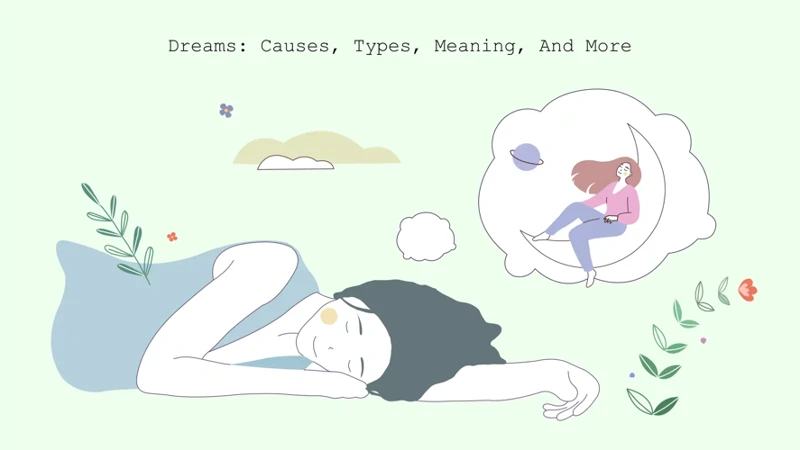
Treatment for sleep disorders often involves addressing the underlying causes and implementing various therapies and medications to improve sleep quality. Addressing underlying causes may involve lifestyle changes such as maintaining a consistent sleep schedule, creating a conducive sleep environment, and practicing relaxation techniques to reduce stress and anxiety. Cognitive-behavioral therapy (CBT) can also be effective in treating sleep disorders by identifying and changing negative thought patterns and behaviors that disrupt sleep. In some cases, medications may be prescribed to help regulate sleep patterns or manage underlying medical conditions contributing to sleep disorders. It is important to consult with a healthcare professional to determine the most appropriate treatment plan based on the specific sleep disorder and individual needs.
Addressing Underlying Causes
Addressing underlying causes is an essential aspect of the treatment for sleep disorders associated with sleep talking. Identifying and addressing these underlying causes can help alleviate sleep talking episodes and improve overall sleep quality. One common underlying cause is stress and anxiety. Engaging in stress reduction techniques, such as deep breathing exercises, meditation, or therapy, can help manage these underlying psychological factors. Additionally, creating a comfortable and conducive sleep environment can make a significant difference. This includes ensuring a cool, dark, and quiet bedroom, using comfortable bedding and pillows, and establishing a regular sleep schedule. Making lifestyle changes like avoiding alcohol and caffeine, exercising regularly, and maintaining a healthy diet can also contribute to reducing sleep talking episodes. In some cases, medications may be prescribed to address specific underlying conditions, such as anxiety disorders or sleep disorders. However, it’s important to consult a healthcare professional before starting any medication. By addressing the underlying causes, individuals can work towards reducing sleep talking and achieving better sleep quality.
Therapies and Medications
Therapies and medications play a crucial role in treating sleep disorders associated with sleep talking. One common approach is cognitive-behavioral therapy (CBT), which aims to identify and address the underlying causes of sleep talking. CBT techniques may include relaxation exercises, stress management strategies, and sleep hygiene practices. Another therapy that has shown promising results is hypnosis, where a trained professional helps the individual enter a state of deep relaxation and suggests positive changes in sleep behavior. Medications can also be prescribed to manage underlying sleep disorders. For example, if sleep talking is linked to sleep apnea, a continuous positive airway pressure (CPAP) machine may be recommended to improve breathing during sleep. In cases where sleep talking is associated with other sleep disorders, such as restless leg syndrome or narcolepsy, specific medications may be prescribed to address these conditions. It is important to consult with a healthcare professional to determine the most suitable therapy or medication for individual circumstances.
Tips for Reducing Sleep Talking
If you or someone you know is seeking ways to reduce sleep talking, there are several tips that may be helpful. Improving the sleep environment can contribute to a better night’s rest and potentially reduce sleep talking. This can involve creating a comfortable and quiet sleeping space, maintaining a cool temperature, and using white noise or earplugs if external noises are a disturbance. Stress reduction techniques such as meditation, deep breathing exercises, and engaging in relaxing activities before bedtime may also help reduce sleep talking. Additionally, practicing good sleep hygiene by keeping a consistent sleep schedule, avoiding stimulating substances like caffeine and nicotine, and limiting electronic device usage before bed can contribute to better sleep quality and potentially decrease sleep talking episodes. Trying one or a combination of these tips may be beneficial in minimizing sleep talking occurrences.
Improving Sleep Environment
Improving the sleep environment is essential for promoting better sleep and reducing the likelihood of sleep talking episodes. Here are some tips to create an optimal sleep environment:
1. Dark and Quiet: Ensure that your bedroom is dark, quiet, and free from distractions. Use blackout curtains, earplugs, or a white noise machine if necessary to block out any disruptive sounds or light.
2. Comfortable Temperature: Keep your bedroom at a comfortable temperature, neither too hot nor too cold. A cool and well-ventilated room can help promote better sleep.
3. Comfortable Bedding: Invest in a good quality mattress, pillows, and bedding that provide adequate support and comfort. A comfortable sleep surface can reduce discomfort and minimize the likelihood of sleep disruptions.
4. Reduce Clutter: Keep your bedroom tidy and free from clutter. A clean and organized space can create a sense of calmness and relaxation, facilitating better sleep.
5. Dim Lights: Before bedtime, dim the lights in your bedroom to signal to your body that it’s time to wind down. Avoid exposure to bright lights, especially from electronic devices, as they can interfere with your sleep-wake cycle.
6. Create a Relaxing Atmosphere: Establish a relaxing bedtime routine that helps you unwind and prepare for sleep. This could include activities such as reading a book, practicing relaxation techniques, or taking a warm bath.
7. Avoid Stimulants: Limit your intake of caffeine, nicotine, and alcohol, especially close to bedtime. These substances can disrupt sleep and contribute to sleep talking episodes.
By implementing these strategies, you can create a sleep environment that promotes relaxation, reduces disturbances, and improves your overall sleep quality. Remember, a peaceful sleep environment can go a long way in managing sleep talking and ensuring a restful night’s sleep.
Stress Reduction Techniques
Stress reduction techniques can be helpful in managing sleep talking episodes and promoting a more restful night’s sleep. Here are some techniques that can aid in reducing stress:
- Deep Breathing: Deep breathing exercises, such as diaphragmatic breathing or belly breathing, help activate the body’s relaxation response and reduce stress. Take slow, deep breaths, inhaling through the nose and exhaling through the mouth.
- Meditation: Practicing meditation regularly can help calm the mind and reduce stress. Find a quiet and comfortable place, close your eyes, and focus on your breath or a specific mantra or phrase.
- Progressive Muscle Relaxation: This technique involves tensing and relaxing different muscle groups in the body, helping to release tension and promote relaxation. Start from your toes and work your way up to your head, gradually tensing and releasing each muscle group.
- Exercise: Engaging in regular physical activity can help reduce stress and improve sleep quality. Choose activities you enjoy, such as walking, jogging, yoga, or dancing, and aim for at least 30 minutes of exercise most days of the week.
- Journaling: Writing down your thoughts, feelings, and concerns in a journal can be a therapeutic way to release stress. It allows you to process your emotions and gain perspective on the triggers that may contribute to sleep talking.
- Relaxation Techniques: Explore various relaxation techniques like guided imagery, aromatherapy, listening to calming music, or taking a warm bath before bedtime. These techniques can help relax the body and mind, preparing you for a peaceful sleep.
- Seeking Support: If stress and anxiety are consistently interfering with your quality of sleep, consider seeking support from a therapist or counselor. They can provide guidance and teach you additional stress management techniques to incorporate into your daily routine.
By incorporating these stress reduction techniques into your lifestyle, you may be able to reduce sleep talking episodes and promote a more peaceful and restorative sleep.
Sleep Hygiene Practices
Implementing good sleep hygiene practices is crucial for promoting healthy sleep patterns and reducing the occurrence of sleep talking. Here are some sleep hygiene practices that can help minimize sleep talking episodes:
1. Maintain a Consistent Sleep Schedule: Stick to a regular sleep routine by going to bed and waking up at the same time every day, even on weekends. This helps regulate your body’s internal clock and promotes better sleep quality.
2. Create a Calm and Comfortable Sleep Environment: Make sure your bedroom is dark, quiet, and at a comfortable temperature. Use earplugs or white noise machines to block out any disruptive sounds that may trigger sleep talking.
3. Avoid Stimulants: Limit your consumption of caffeine, nicotine, and alcohol, especially close to bedtime. These substances can interfere with the quality of your sleep and increase the likelihood of sleep disturbances like sleep talking.
4. Establish a Pre-Sleep Routine: Engage in relaxing activities before bed to prepare your body and mind for sleep. This could include reading a book, taking a warm bath, or practicing gentle stretching or meditation.
5. Manage Stress and Anxiety: Incorporate stress-reduction techniques into your daily routine, such as deep breathing exercises, journaling, or engaging in a hobby that brings you joy. High levels of stress and anxiety can contribute to sleep talking, so finding healthy ways to manage these emotions is important.
6. Limit Electronic Device Usage: The blue light emitted by electronic devices like smartphones, tablets, and computers can disrupt your sleep patterns. Avoid using these devices at least an hour before bedtime to allow your brain to wind down.
By implementing these sleep hygiene practices, you can create an optimal sleep environment and promote better sleep quality, reducing the likelihood of sleep talking episodes. Remember, it may take time to see the full benefits of these practices, so consistency is key. Sweet dreams!
Conclusion
In conclusion, sleep talking is a common occurrence that can sometimes be a sign of an underlying sleep disorder. While occasional sleep talking is generally harmless, it can become a cause for concern if it is frequent, disruptive, or accompanied by other symptoms. It is important to pay attention to the duration and intensity of sleep talking episodes, as well as any disruptions it may cause to sleep quality. Sleep disorders such as REM sleep behavior disorder, sleep apnea, and night terrors have been associated with sleep talking. Therefore, it is crucial to consider the possibility of an underlying sleep disorder if sleep talking becomes problematic. Diagnosis of sleep disorders often involves a sleep study, also known as polysomnography, to monitor brain activity, breathing patterns, and other physiological functions during sleep. Once diagnosed, treatment options can include addressing the underlying causes, utilizing therapies such as cognitive-behavioral therapy, and, in some cases, medications. It is also beneficial to incorporate strategies to reduce stress, improve sleep environment, and practice good sleep hygiene to minimize sleep talking episodes. Overall, while sleep talking can be intriguing and even amusing at times, it is important to recognize its potential significance in relation to sleep disorders and seek appropriate evaluation and treatment if necessary.
Frequently Asked Questions
What causes sleep talking?
Sleep talking can be caused by various factors, including dreams and REM sleep, stress and anxiety, and the use of alcohol or certain medications.
Is sleep talking a common phenomenon?
Yes, sleep talking is a relatively common phenomenon. It is estimated that around 5% of adults talk in their sleep at least occasionally.
Can sleep talking be a sign of a sleep disorder?
Yes, sleep talking can be a sign of an underlying sleep disorder, especially when it is frequent, disruptive, and accompanied by other symptoms.
Does sleep talking affect the quality of sleep?
Yes, sleep talking can disrupt sleep and impact its overall quality, leading to daytime sleepiness and fatigue.
Can a person have conversations during sleep talking?
Yes, some individuals can engage in coherent conversations during sleep talking, although they may not have any recollection of it upon waking up.
Can sleep talking be interpreted as having psychological meaning?
Sleep talking can sometimes provide insights into the dreamer’s thoughts, feelings, or unresolved issues. However, it is essential to approach any interpretations with caution.
Can sleep talking be hereditary?
There is evidence to suggest that sleep talking can have a genetic component, with a higher likelihood of experiencing it if other family members have a history of sleep talking.
Can sleep talking be treated with medication?
In some cases, medication may be used to treat sleep talking, particularly if it is associated with an underlying sleep disorder. However, medication is not always necessary and is typically determined on a case-by-case basis.
Can I do anything to reduce or prevent sleep talking?
While it may not be possible to completely eliminate sleep talking, certain strategies such as managing stress, maintaining a consistent sleep schedule, and creating a conducive sleep environment can help reduce its frequency.
Is sleep talking the same as sleepwalking?
No, sleep talking and sleepwalking are two distinct sleep disorders. Sleepwalking involves physically moving around and engaging in activities while asleep, whereas sleep talking is limited to vocalizations during sleep.

